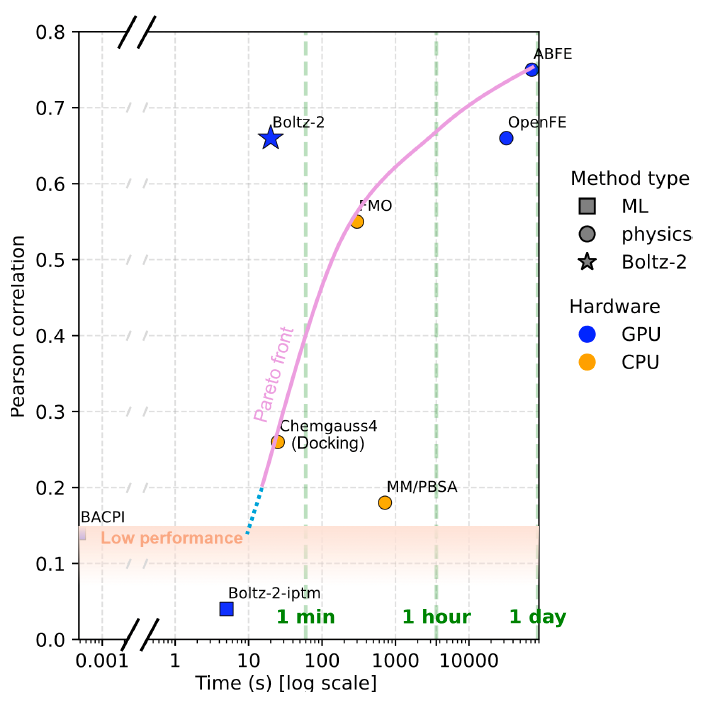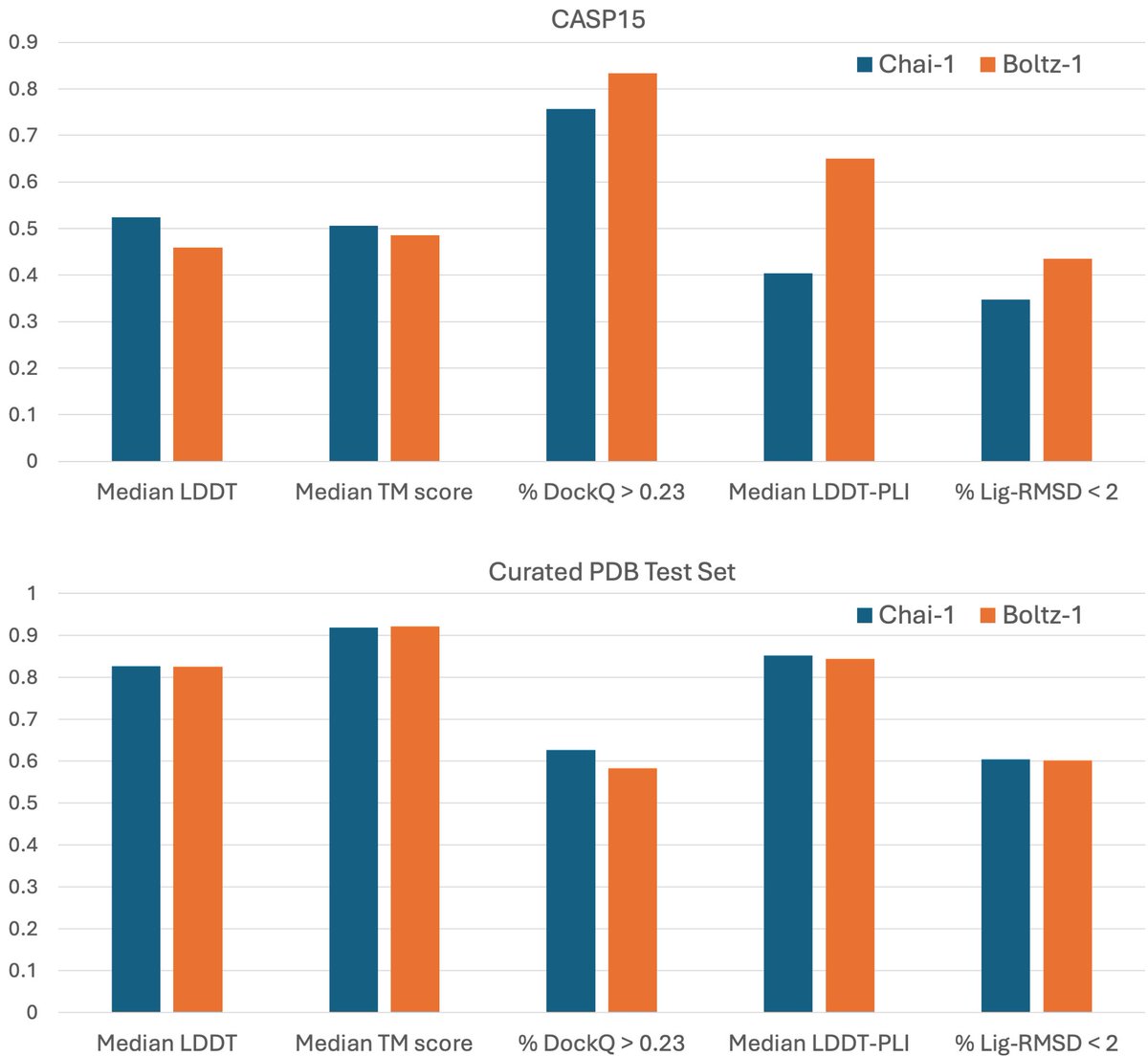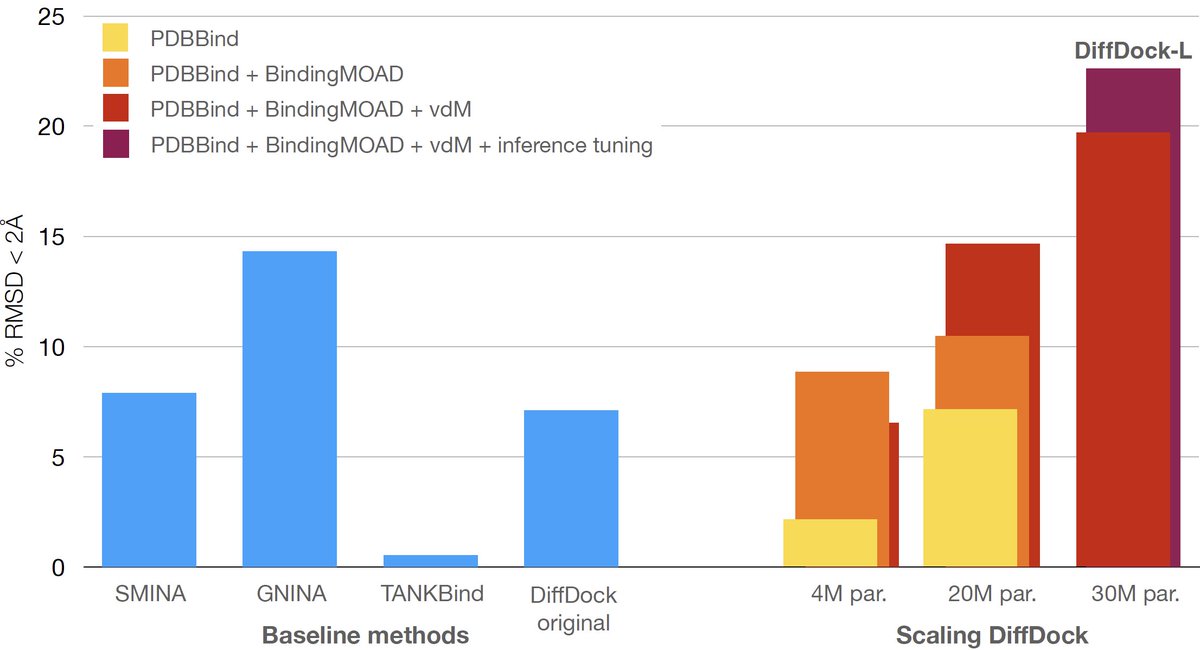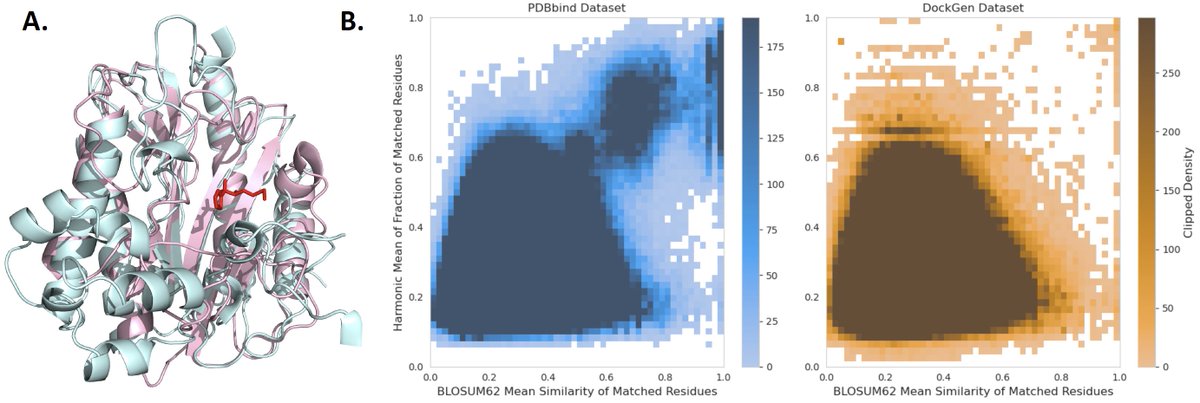Excited to share DiffDock, new non-Euclidean diffusion for molecular docking! In PDBBind, standard benchmark, DiffDock outperforms by a huge margin (38% vs 23%) the previous state-of-the-art methods that were based on expensive search!
arxiv.org/abs/2210.01776
A thread! 👇
arxiv.org/abs/2210.01776
A thread! 👇
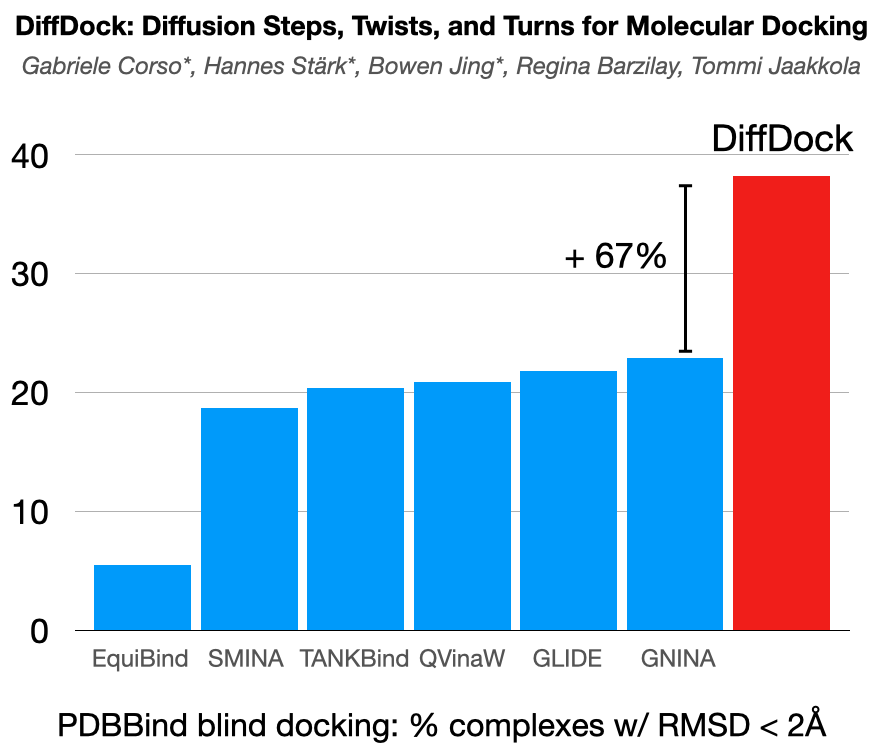
@HannesStaerk @BarzilayRegina Recent regression-based ML methods for docking showed strong speed-up but no significant accuracy improvements over traditional search-based approaches. We identify the problem in their objective functions and show how generative modeling aligns well with the docking task. 

@HannesStaerk @BarzilayRegina We, therefore, develop DiffDock, a non-Euclidean diffusion model over the space of ligand poses for molecular docking. DiffDock defines a diffusion process over the position of the ligand relative to the protein, its orientation, and the torsion angles describing its conformation 

@HannesStaerk @BarzilayRegina To efficiently train and run the diffusion model over this highly non-linear manifold, we map the elements of the manifold to a product space of T(3) x SO(3) x SO(2)^m groups corresponding to the translation, rotation, and torsion transformations.
@HannesStaerk @BarzilayRegina We achieve a new state-of-the-art 38% top-1 prediction with RMSD<2A on the PDBBind blind docking benchmark, considerably surpassing the previous best search-based (23%) and deep learning methods (20%). DiffDock also has faster runtimes than the previous state-of-the-art methods. 
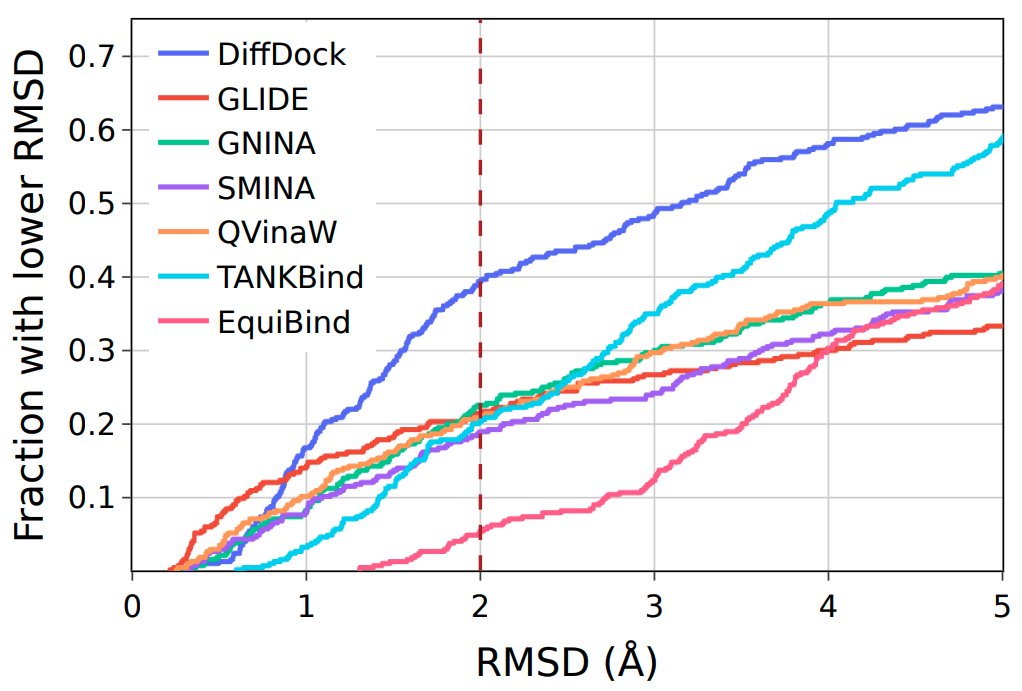
@HannesStaerk @BarzilayRegina We also train a confidence model that can rank poses by likelihood and predict the model's confidence in the generated poses. Experimentally, this confidence score provides high selective accuracy, reaching 83% on its most confident third of the previously unseen complexes. 

@HannesStaerk @BarzilayRegina The project resulted from a great collaboration with @HannesStaerk (joint first), Bowen Jing (joint first), @BarzilayRegina and Tommi Jaakkola. Code and trained models are available at: github.com/gcorso/DiffDock
@HannesStaerk @BarzilayRegina Also check out the thread by @HannesStaerk!
https://twitter.com/HannesStaerk/status/1577626884661075968
• • •
Missing some Tweet in this thread? You can try to
force a refresh


